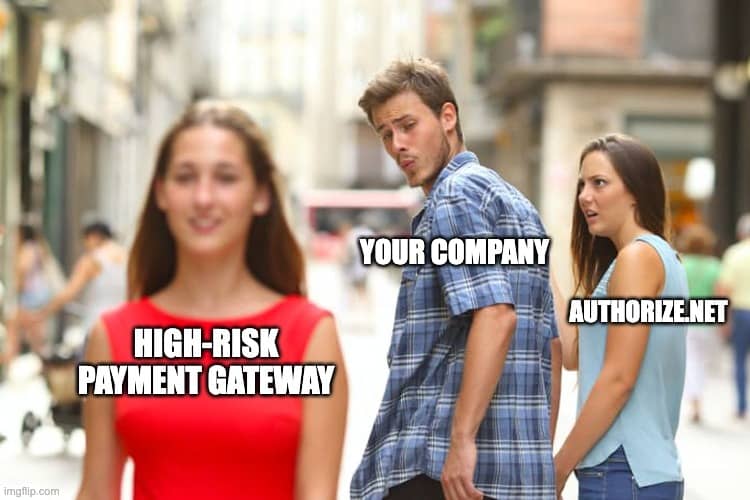Business Billing Descriptors: Limit Chargebacks

Companies spend a lot of time working on logos and branding. They often pay consultants and others to micromanage the process of putting together taglines for marketing materials.
But there’s one part of their branding that many of these businesses miss.
It’s called the business billing descriptor and doesn’t get posted on social media or in marketing channels.
It gets posted in people’s online banking accounts.
Any business, especially a small business, needs to consider how their business billing descriptors work. If you’ve never looked at how your business is represented this way, now is the time.
It’s Not Just A Detail! Why Business Billing Descriptors are Important
To understand why the billing descriptor is such an essential part of business representation, look at it from the customer’s perspective.
Someone buys something. Maybe it’s online, or perhaps it happens in a store. They get a receipt, but that’s the only tangible documentation they have (except for digitally, which might show up on a bank or credit card statement).
Often, they throw away the receipt and take the product home. Or with services, they enjoy the provided results and file the ticket away somewhere.
Later, sometimes much later, they look at their online banking. They have a charge, which can be big or small, and a line of text helps them to identify what they paid for. That’s the business descriptor.
The problem is that if they forgot about what they bought earlier, they look at the business billing descriptor, and if it doesn’t seem to make sense, they get suspicious. They may flag the transaction with their bank. Take that scenario a hundred times or a thousand times, and you have a tsunami of chargebacks that can authentically compromise a business revenue cycle.
For example, there’s something called Stripe EEA-STEL. EEA stands for European Economic Area, and STEL stands for Short Term Establishment License. This string: “Stripe EEA-STEL aggregation,” shows up on people’s banking statements and confuses them.
So if you feel like it’s just a detail for business, think about looking at a charge on your online banking and scratching your head trying to figure out what that represents.
Business billing descriptors need to be clear and transparent (not things like Stripe EEA-STEL aggregation). They need to represent the business well. That’s part of best practices in credit card processing and selecting and working with merchant account services, where Zenti can help clients enhance their revenue cycles.
Chargebacks, Fraud and Merchant Services
One reason that business billing descriptors are so important is that they influence chargebacks.
A chargeback happens when there’s a dispute about something. The customer doesn’t want to pay for a product or service.
There may be a defective product, or they’re not happy with the service. But often, the dispute is over the customer’s failure to identify what they paid for, even after they (or several others) have looked at the cardholder’s statement.
So less effective business billing descriptors (without the company or the merchant’s name) tend to lead to high numbers of chargebacks. Remember Stripe EEA-STEL aggregation?
That often cascades into problems with the business and its merchant services.
Suppose you’re a business leader who has had significant numbers of chargebacks for an eCommerce or a brick-and-mortar store. In that case, you know that merchant service providers sometimes drop clients over chargeback rates. There’s a general tendency to tie high chargeback numbers to high liability and risk. You may have heard about situations where a business turned itself into a corner by ignoring rising chargeback activity levels and dropping.
Many of these chargebacks can be prevented with the resources that Zenti offers. You also have to consider the possibility that some of these chargebacks will be fraudulent. But some of the most common legitimate customer complaints are those where the customer can’t figure out what they paid for (when they see things like Stripe EEA-STEL aggregation.) It’s infuriating to most people to look at online banking and not be able to resolve the charges with what you remember spending during a given time frame.
Third Parties and Banks
Another way to look at it is from the bank’s perspective.
The bank that offers the online banking service operates on behalf of the depositor, the customer. So they offer customer protection guarantees for that person’s account. That means the bank needs to sift through all the transactions and figure out which ones are legitimate and which may not be.
It’s relatively easy for an account holder with a debit or credit card to walk into a bank and ask them to dispute a particular charge. They’re more likely to do this if they can’t figure out who’s billing them.
Some modern technology tends to exacerbate this problem. Take the Apple App Store – an online environment where many purchases are made daily. Some people describe the Apple app store as a “walled garden” where Apple exercises monolithic control. But how much power does Apple have over its app merchants? The end customer usually doesn’t know – and that’s part of the problem with having something like Stripe EEA-STEL aggregation on a statement.
There is a further layer of mystery here, with individual vendors selling applications through Apple. When the billing descriptor isn’t clear, the customer or the issuing bank may figure that they have a problem with an individual vendor or might feel they have a problem with Apple. They might seek interaction with one another, but they may be going to the wrong place.
That’s one major problem with resolving billing disputes. Another is where poor subscription billing practices or the wrong types of billing descriptors (think Stripe EEA-STEL aggregation) on card transactions leave someone indignant at charges that never seem to go through their bank account and keep repeating weekly or month after month.
That’s worth thinking about, partly because abuse of subscription services in the past couple of decades has given people a lot of heartburn regarding consumer advocacy.
There was a spate of cases where businesses didn’t have an excellent opt-out process to allow people to stop getting charged for something that they didn’t use. The Wild West atmosphere of the “free credit check” business was one prime example. After initial free service, the companies started to charge customers monthly with impunity, based on rules shrouded in the fine print. Online banking was new enough that the best practices to control or resolve this kind of billing weren’t there.
That left a lot of customers with a wrong opinion of the merchant process and leads some people to pursue chargebacks aggressively now.
It also shows why, in addition to having a good billing descriptor, you need good opt-out processes in place. If people have to jump through too many hoops to avoid improper recurring subscription charges for something they don’t want or need, your business can have a significant problem on its hands.
So how do businesses fine-tune their billing descriptor policies?
Default, Dynamic and ACH Billing Descriptors
First of all, as a business leader, you can use different billing descriptors to represent your business.
The first one is called a default descriptor. This type of descriptor (also called static descriptors) is a little more basic and not as versatile. (Maybe Stripe EEA-STEL aggregation is an example).
Dynamic descriptors are different – they can have features more open to micromanagement for things like subscriptions.
The ACH process also has its type of descriptors for bank drafts.
Working with these three types of descriptors, you can ensure that customers have a good idea of who is billing them and why. You can also use merchant services like Zenti to streamline your operations for success.
Billing Descriptor Best Practices
Some guidelines can help your business to thrive with lower chargebacks and better billing descriptors.
One is to directly include the Dba name or ‘operating as’ business name (or a commonly known legal name or “doing business as” name) rather than just a combination of letters and numbers or some strange third-party name that doesn’t make sense to the customer. Specific descriptions of products and services with dynamic descriptors help, too. A domain name may be a good addition.
Another best practice is to have the business’s contact information in the billing descriptor. Companies that put a phone number in the billing descriptor can significantly lower chargebacks. That is, as long as it’s the correct phone number.
Businesses that put a phone number in the descriptor, but don’t offer good phone support, are likely to end up right back where they started – disputing chargebacks and getting black marks on their merchant reputations.
Then, too, businesses can look at how rigid their descriptors are. Is there the opportunity to use a descriptor or just a complex descriptor (like Stripe EEA-STEL aggregation) in billing? Companies like Zenti can help with functionality for merchant account handling and dynamic descriptors tools.
High-Risk Businesses and Chargebacks
This is even more important for businesses in high-risk categories who have to look at payment gateways, payment processor strategies, and more from a disadvantage.
Businesses in specific high-risk categories already have a more challenging time getting merchant services than others in different industries.
These are some of the high-risk businesses that need dynamic descriptors as well as specialized merchant services and credit card processing strategies:
- Adult products and services
- CBD or Delta eight products
- Ticket sales
- Credit repair
- Debt collection
In addition, businesses that use “card not present” transactions may see higher chargeback numbers if they don’t have the right kinds of dynamic descriptors.
In other words, when the credit card is not physically scanned, it’s crucial to safeguard the information you get and tie it to someone’s bank account. That means more deliberation in designing your transactions and the moving parts around them, including your billing descriptors.
That’s just the start for the high-risk business. These companies may face rejections by big banks and merchant service companies. They may have to get creative about how they handle their transactions.
Big companies that have pioneered some of this type of work, and the innovative use of things like dynamic descriptors, know the challenges the high-risk merchant’s face and talk about it quite a bit.
High-risk businesses may use proactive and preventative chargeback strategies to keep their businesses more appealing to the average credit card processing service. Zenti can help these companies ensure they are optimized for merchant success.
Some of this involves high-design chargeback prevention tools like dispute resolution wizards and AI resources that work through API interfaces to solve problems on the front end. A good identity and access management strategy help, too.
The bottom line is that there is an even higher bar for a high-risk business for clear and transparent billing and everything else that happens around keeping chargeback rates low.
Getting Ready for Fintech
All of this, including dynamic descriptors**,** also helps businesses prepare for the future.
PCI payments are the big thing right now, but cryptocurrency is raising its head on the horizon. People are starting to embrace new methods of payment and new types of transactions.
Companies maintain their competitiveness in modern commerce operations by being current and up-to-date on default and dynamic descriptors.
That’s important because, just like cryptocurrency, another trend is also emerging – the automation of business accounts with high-end merchant services that look at things like chargeback ratios and act accordingly.
In other words, businesses often find it more critical now to comply with a higher standard regarding chargebacks and chargeback protection.
With that in mind, it’s essential to test a billing descriptor on the provider side (to ensure it doesn’t say something like Stripe EEA-STEL aggregation). Doing this kind of testing shows what a customer is likely to see in their online banking account, and brainstorming about what happens next is part of enhancing a business revenue cycle.
This can help businesses anticipate problems with dynamic descriptors and other business billing descriptors. See if any of this applies to your company and get services from Zenti to keep things on an even keel.
Read Next

Find out whether Authorize.Net works for high risk merchants, what restrictions you might face and how to get approved.

Get expert advice on selling CBD products on Shopify, including compliance tips and setting up secure payment options.

Find out why Square may deactivate merchant accounts and steps to resolve issues and maintain uninterrupted payment services.
Need a High-Risk Merchant Account?
Disruption-free payment processing at the best price for your situation, guaranteed.
Get Free Guidance Now!